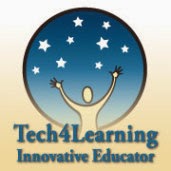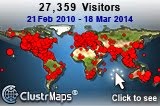Tuesday, March 9, 2010
A Day in the Life of an MJGDS 3rd Grader
Please watch, listen and enjoy a peek into our school.
Monday, March 8, 2010
Sowing the Seeds for a More Creative Society
Lifelong Kindergarten :: MIT Media Lab via kwout
As part of their mission to "sow the seeds for a more creative society," the MIT media lab has developed a free program called Scratch that encourages the kind of open-ended exploration and creative problem solving that is not on the test, but that promotes the trial and error learning that is the heart of math, science and technological innovation. The beauty of Scratch and similar applications is that while the processes they engage are complex, most children are naturally drawn to them and find them fun. Kids ask to "play Scratch."

In addition to Scratch, here are some other recommended resources for open-ended, creative exploration:
Whizzball -from Discovery Education, whizzball is a puzzle creator. Students can design puzzles, submit their puzzles for others to solve and solve puzzles created by others. I have found this to be challenging and fun for grades 1-5.
Fantastic Contraption- physics challenge. Use the materials provided to create a contraption that solves the challenge of getting something from point A to point B. There are multiple challenges and endless solutions. I am using this with a first grade STEM enrichment class, and they LOVE it. I could see it being popular with older students as well, although I haven't introduced to other grades yet.
Lego Digital Designer - design tool using virtual legos.
PHUN - 2D physics sandbox. This one is more advanced. I recommend viewing at least one tutorial before jumping in to play. I used this with 5th grade, and it was fun (phun) at first, but many of them became frustrated quickly.
Monday, March 1, 2010
Teach Paperless for Earth Day

I just joined over 475 teachers around the world who have pledged to teach paperless on April 22nd in celebration of Earth Day. I pledged to "use no paper and accept no paper in my classroom this Earth Day," so I will also be turning off the laser printer that resides in my classroom for the day.
Please join the pledge, yourself, by signing up here.
I have invited/challenged all of my fellow "in the building" teachers to join me, as well. It would be wonderful if our whole school would embrace a paperless day. Our school is part of a synagogue, and I plan to try to inspire the synagogue staff to also pledge to go paperless on April 22nd.
I think it will be fun to share creative ideas for a day of being thoughtfully paperless. I know that many people will be using technology to replace paper, and, of course, so will I. You and your students might enjoy a digital camera scavenger hunt. You could create one with a special theme for Earth Day.
There are lots of non-tech ways to go paperless as well.
I recently had a guest in my classroom who made recycled paper with the students. It wasn't too difficult, just required a few special supplies. I have offered to (attempt to) replicate this project with any interested class. It's a different take on the paperless idea, using previously discarded paper to create something unique and beautiful.

Paula White shared this idea with accompanying photo on twitter: Paperless means kids use dry erase markers on tables and then antibacterial wipe to clean.

Just a few thoughts and ideas. The possibilities for paperless learning, creating and sharing are almost endless. Please share additional links and ideas in the comments.




